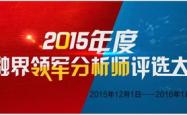UnderstandingBusinessFinanceTerminology
5. Assets
Assets are items of value owned by a business, such as cash, inventory, equipment, and property. They are listed on the balance sheet and can be used to generate revenue.
3. Profit
Profit is the amount of money that a business has left over after deducting its expenses from its revenue. It is a key indicator of a company's financial health.
8. Return on Investment (ROI)
ROI is a measure of the profitability of an investment. It is calculated by dividing the net profit from the investment by the initial cost of the investment.
When it comes to business finance, it is essential to have a good grasp of the terminology used in the industry. Here are some key terms that you should be familiar with:

By understanding and using these key terms in your business finance discussions, you will be better equipped to make informed decisions and effectively manage the financial aspects of your business.
1. Revenue
Revenue refers to the total income generated by a business through its normal operations, such as sales of goods or services.
2. Expenses
Expenses are the costs incurred by a business in order to generate revenue. This includes items such as salaries, rent, utilities, and supplies.
6. Liabilities
Liabilities are the debts and obligations of a business, including loans, accounts payable, and accrued expenses. They represent the claims that creditors have on the company's assets.
4. Cash Flow
Cash flow is the movement of money in and out of a business. Positive cash flow means that the business is bringing in more money than it is spending, while negative cash flow indicates the opposite.
10. Financial Statements
Financial statements are documents that provide an overview of a company's financial performance. The main types of financial statements include the income statement, balance sheet, and cash flow statement.
9. Break-Even Point
The break-even point is the level of sales at which a business covers its costs and makes neither a profit nor a loss. It is an important metric for determining the viability of a business.
7. Equity
Equity is the difference between the value of a company's assets and its liabilities. It represents the ownership interest of the shareholders in the business.
免责声明:本网站部分内容由用户上传,若侵犯您权益,请联系我们,谢谢!联系QQ:2760375052









